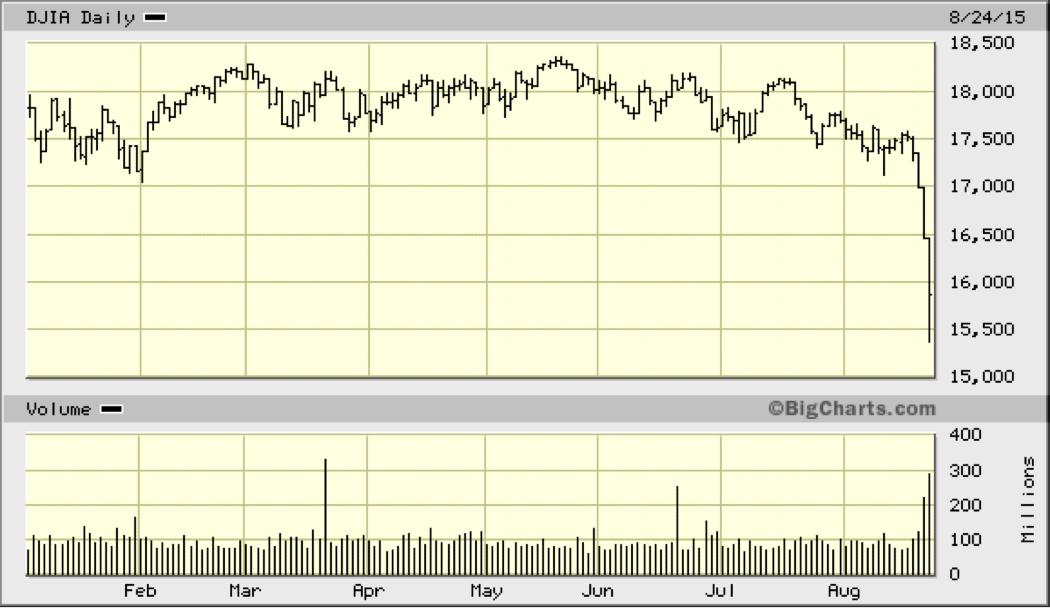In recent weeks, and in recent days in particular, stocks around the world have fallen sharply. The S&P 500 Index was down 3.94% today and is now down 11% from its May 21 all-time high close of 2130.82. The Dow Jones Industrial Average has fallen to an 18-month low.
Sudden, sharp declines can be disheartening for long-term investors, as gains built up over months or years can be erased in a matter of days. However, volatility is unavoidable in investing and 10% declines in stocks actually occur, on average, about once per year. Until the last few weeks, the U.S. stock market had traded in a range of about plus or minus 3.5% from its starting point on January 1, 2015a very narrow range. Thus, 2015, when viewed in a historical context, has actuallyuntil the last several daysbeen a very placid year in the markets.
Credit: BigCharts Year-to-date chart of Dow Jones Industrial Average
The 2008-09 financial crisis was truly made in America. Individuals and institutions both issued and took on too much debt and bid up real estate prices to unsustainable levels. The resulting fall in prices took down overleveraged banks, investors and homeowners alike.
Today’s volatility is mostly made in China. A slowing economic growth rate and plunging stock market has compelled the Chinese government to devalue the yuan and to intervene in the country’s stock market in an attempt to buoy prices. So far these efforts have failed, and investors are beginning to wonder how/when the situation will be brought under control. Investors have long been skeptical of China’s purported 7% economic growth rate, particularly as anecdotal evidence over the past years has mounted that points to a sharply lower growth rate. Now the Chinese government is looking clumsy in its attempts to support the stock market it was previously touting.
This summer U.S. markets did a good job of shrugging off both difficulties in Greece in June and China in July. Now the situation in China is worsening and investors are suffering a crisis of confidence. And with the Fed still slated to possibly begin raising interest rates in September, investors’ collective tolerance for risk has declined significantly.
Where will markets settle out? Are we headed lower over the coming weeks and months? No one knows for sure. Short-term market movements are impossible to predict consistently. U.S. stocks, which have been trading at above-average valuations for some time, have not had a meaningful correction since 2011. Despite the sharp downturn in the markets, the U.S. economy, with the exception of the energy sector, appears to be quite solid. While our 2% GDP growth rate is uninspiring, real estate markets are strong, consumers are in good shape, corporate America is financially strong and our banks are the healthiest they have been in the last six years. Recent corporate earnings have been somewhat soft, held back by our strong dollar and lower profits in the energy sector. However, these two factors are arguably favorable for our country’s overall long-term economic health.
So what should investors do? Most investors, if they hold a proportion of stocks that is appropriate for their financial goals and circumstances, will probably be best served by not reacting at all to this bout of volatility. The 2008-09 financial crisis damaged many investors. The investors that it damaged the most, however, were the ones who either sold all or most of their stocks during the depth of the decline. Investors who stay patient and disciplined during volatile times have historically been rewarded when sentiment improves and the markets again turn higher.
If you would like to see how we structure client portfolios, please visit: www.orionportfolios.com or email: [email protected]
Peter C. Thoms, CFA
August 24, 2015





